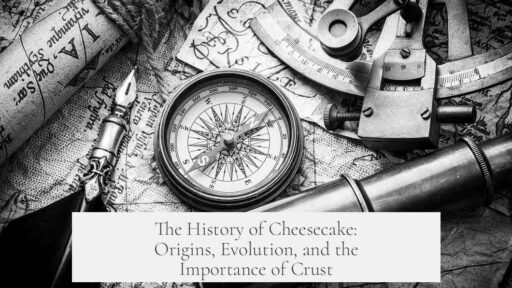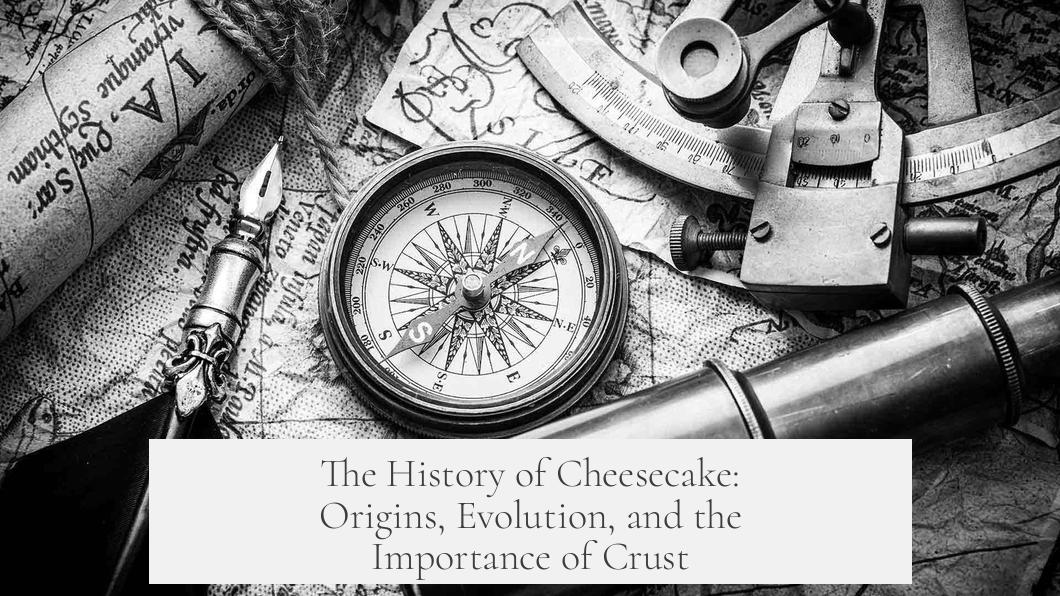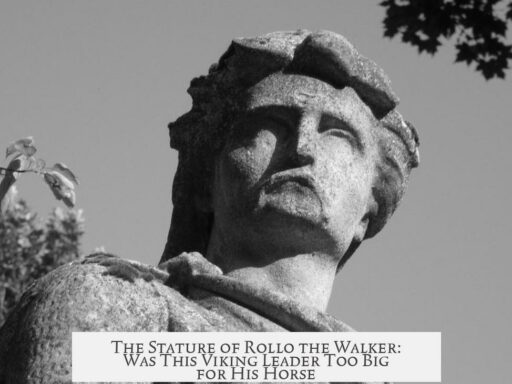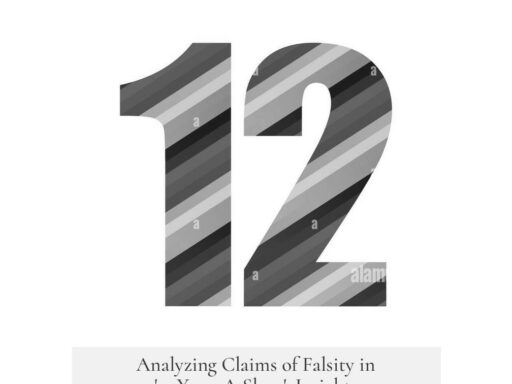Cheesecake’s history dates back to at least the 14th century, with its origins embedded in medieval European cooking traditions. The earliest known recipe resembling modern cheesecake is found in the 14th-century English cookbook, The Forme of Cury, compiled by King Richard II’s master cooks. This recipe, called Sambocade, used a crust made from dried breadcrumbs and butter and was filled with fresh cheese curds, sugar, and egg whites. It was flavored with dried elderflowers and rose water, offering a crumbly texture but a recognizable precursor to today’s cheesecake.
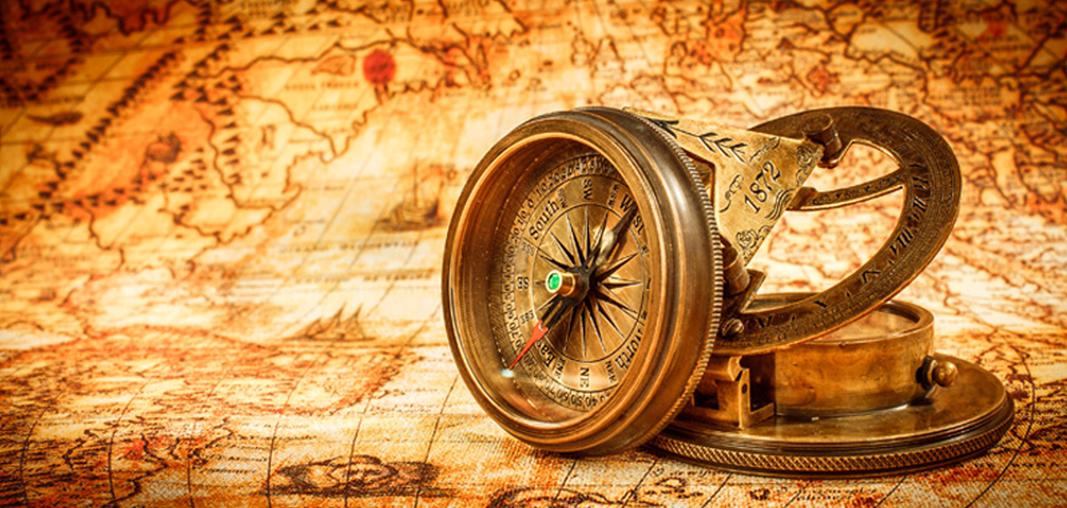
Recipes before this period were rarely documented since cooking was passed on by practice and oral tradition rather than written records. Most early culinary documents come from noble courts, monastic inventories, or medicinal texts, which limit our full insight into the dessert’s very earliest incarnations. A similar recipe by Max Rumpolt from the 18th century shows the dish’s continued development, but Sambocade remains the oldest documented example.
The crust’s use of bread has practical and culinary reasons. Bread was a staple in medieval Europe, always available and rarely wasted. Cooks used old bread crumbs to thicken dishes or as a base for pies and sweets. Incorporating breadcrumbs into a crust was common and served as a binder and texture element. Combining breadcrumbs with butter and sugar not only provided structure but also enhanced the flavor with a rich, sweet, and crunchy contrast to the creamy cheese filling. This tradition has persisted, evolving into the diverse crust options cheesecakes have today, including graham crackers, pastry, or nut bases.
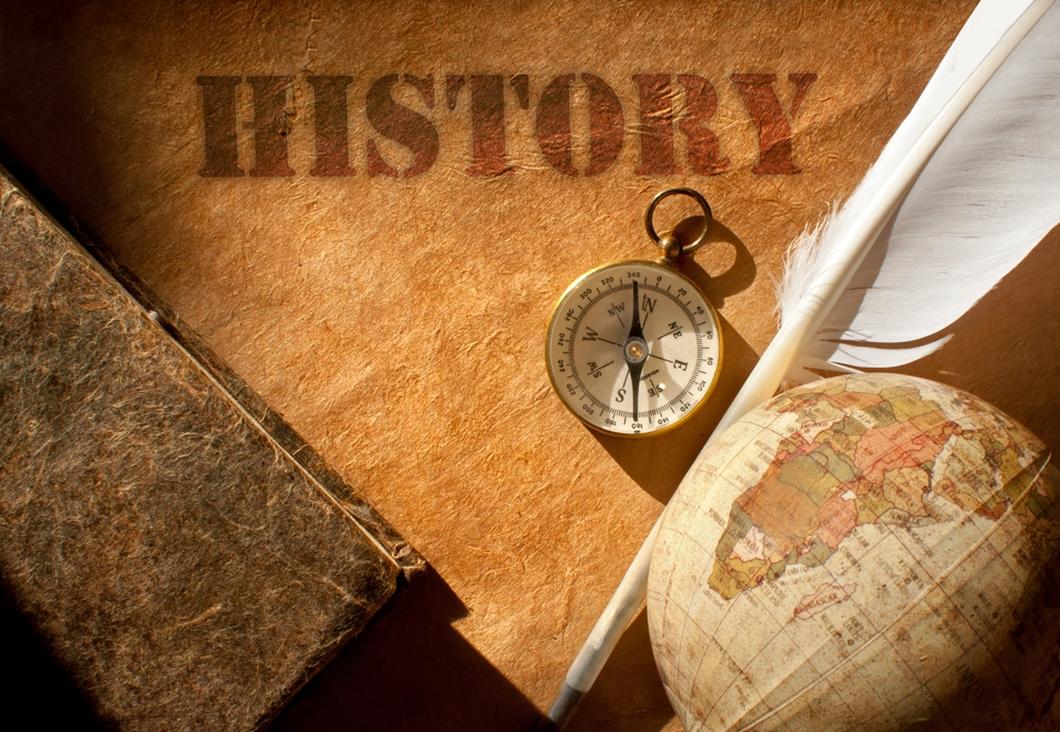
Over time, cheesecake has changed in texture and flavor, becoming richer and smoother with refined cheeses like cream cheese replacing curds. Modern recipes often use baked or no-bake methods, expanding global variations. Despite this evolution, the essential principle of mixing cheese with a structured base remains constant.
- Cheesecake’s documented history traces to 14th-century England’s Sambocade.
- Early crusts used breadcrumbs due to bread’s ubiquity and functional role.
- The recipe has evolved with smoother textures and varied crusts over centuries.
- Flavorings and techniques adapted, but the cheese-plus-crust concept endures.
The Tangy Tale of Cheesecake: What’s the History Behind It?
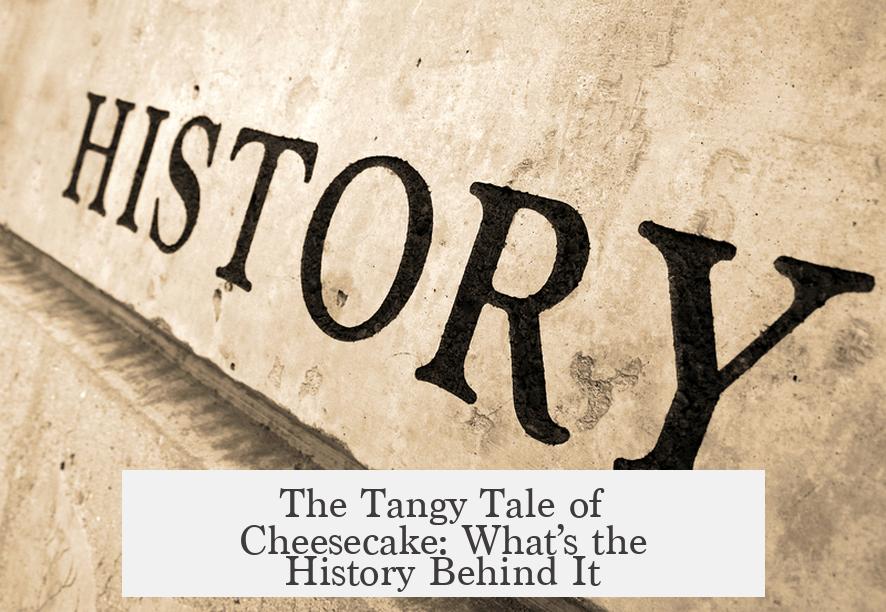
Cheesecake’s history stretches back not just centuries—but nearly millennia. It wasn’t invented by a single individual but evolved through many cultures. The earliest recorded recipe resembling cheesecake dates to 14th-century England, but the concept likely goes far further back. So buckle up—this journey is as rich and creamy as the dessert itself.
What’s the deal with cheesecake? Who cooked up that luscious blend of creamy filling and crispy crust? When was it first made? And why does it usually have a crust anyway? Let’s slice into these questions.
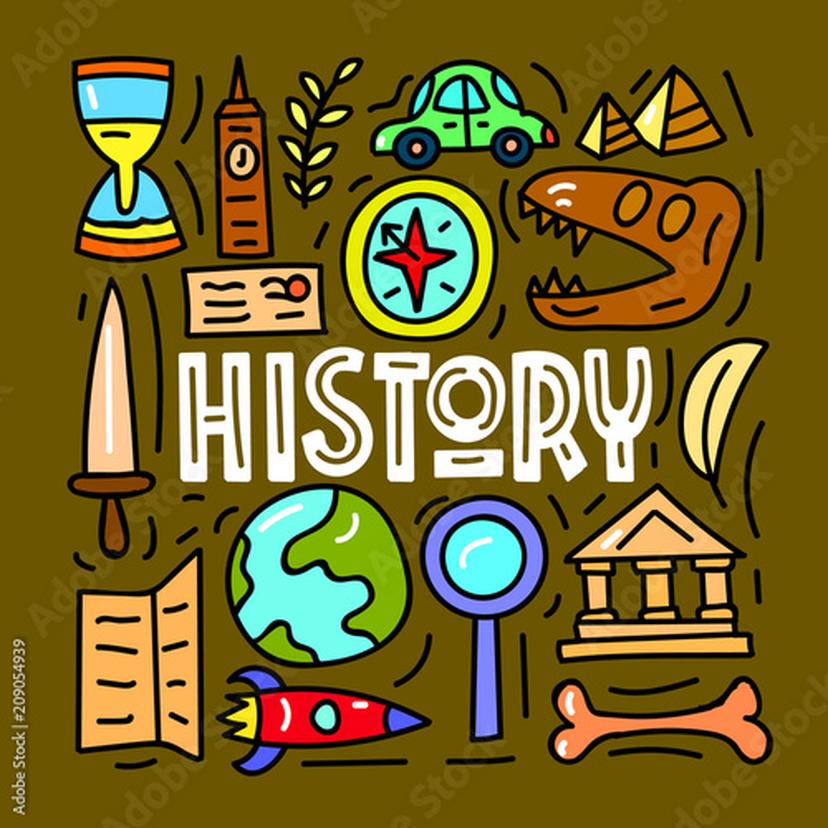
Cheesecake’s Origins: Ancient and Medieval Clues
Documenting recipes in the ancient world isn’t as straightforward as Googling a cookbook today. Average cooks didn’t jot down their dishes. Instead, cooking passed down through oral traditions and hands-on practice. What survives are glimpses: records from royal courts, monasteries, merchant logs, and even medicinal texts.
One of the earliest specific references to something like cheesecake appears in The Forme of Cury, a 14th-century English cookbook. Compiled by royal chefs serving King Richard II around 1390, it gives us a recipe known as Sambocade. This pie calls for a crust made of dried breadcrumbs and butter. Its filling combines fresh cheese curds, sugar, and egg whites—flavored with dried elderflowers and rose water.
If you imagine today’s cheesecake, Sambocade would feel crumbly but familiar. The creamy, tangy cheese filling laid atop a bread-based crust? Classic.
Sambocade and the Evolution of Cheesecake Recipes
Why breadcrumbs for the crust? It boils down to both necessity and clever thrift. In medieval Europe, bread was a staple—so essential that none went to waste. Old bread often found new life in sauces, bases for pies, or thickeners. Using it as crust filled two purposes. Economically, it made sense. Taste-wise, mixing breadcrumbs with butter and sugar and baking it created a delicious, crunchy foundation.
Interestingly, other cookbooks like Liber Cure Cocorum confirm this bread-crust trend. Bread helped give texture and soak up moisture without falling apart. The choice wasn’t random; it was smart, sustainable cooking long before “zero waste” was trendy.
What About the “Who” and “When”?
Could we name the cheesecake inventor? Not really. Many cultures claim similar concoctions. Ancient Greeks credit themselves for early cheese-based desserts, possibly as far back as 2000 BCE. Roman writers mention cheesecakes served to athletes for energy. Yet, these ancient recipes aren’t quite what we call cheesecake today.
The 14th-century English recipe, Sambocade, is the earliest concrete documented recipe closely resembling modern cheesecake. Later on, cookbooks spread across Europe built on this foundation. A 17th-century German recipe by Max Rumpolt, for instance, offers a similar pie, but it post-dates the English version by 400 years.
Has Cheesecake Changed Much?
Absolutely. Over centuries, cheesecake morphed drastically. Modern recipes often use cream cheese, a smooth and tangy American invention from the late 19th century. They sometimes swap bread crusts for graham cracker crumbs or pastry bases. Fillings now embrace vanilla, chocolate, fruits, and even savory additions.
But the core concept—creamy cheese filling on a crisp base—remains. It’s a recipe of continuity, adaption, and cultural fusion. Food historians find it fascinating how something so simple can evolve with ingredients and preferences yet hold onto its identity.
Why Does Crust Matter?
Besides taste and tradition, the crust serves crucial roles: texture, stability, and flavor balance. The bread-based crust of early cheesecakes absorbed moisture without sogginess. It also contrasted with creamy filling, creating that ever-important bite sensation. Baking the crust with butter and sugar enhanced taste, much like today’s graham cracker crust.
In short, the crust isn’t just a “stand-in” or afterthought. It’s a culinary partner—supporting the cheesecake structurally and flavorfully.
Modern Tips Inspired by History
- Want to try classical cheesecake? Use dried breadcrumbs mixed with melted butter and sugar as crust. It’s rustic and flavorful.
- Craving a flavor boost? Herbs like elderflowers or a splash of rose water pay homage to old English recipes.
- Feel adventurous? Explore historical cookbooks or recipes like The Forme of Cury for authentic medieval ideas.
Final Slice: The Story Behind the Slice
Cheesecake is not just a dessert; it’s a culinary journey across centuries and cultures. From simple curds and breadcrumbs to rich, velvety cream cheese marvels, it invites us to savor history—one bite at a time.
So next time you indulge in a slice, think of those medieval cooks who first dipped into cheese, sugar, and breadcrumbs. They didn’t just make food; they created a tradition.
Fancy trying a historical cheesecake recipe? Or prefer today’s New York-style creamy classic? Either way, you’re tasting a story told through centuries of kitchens and palates, all resting on a humble crust designed for survival and savor.
